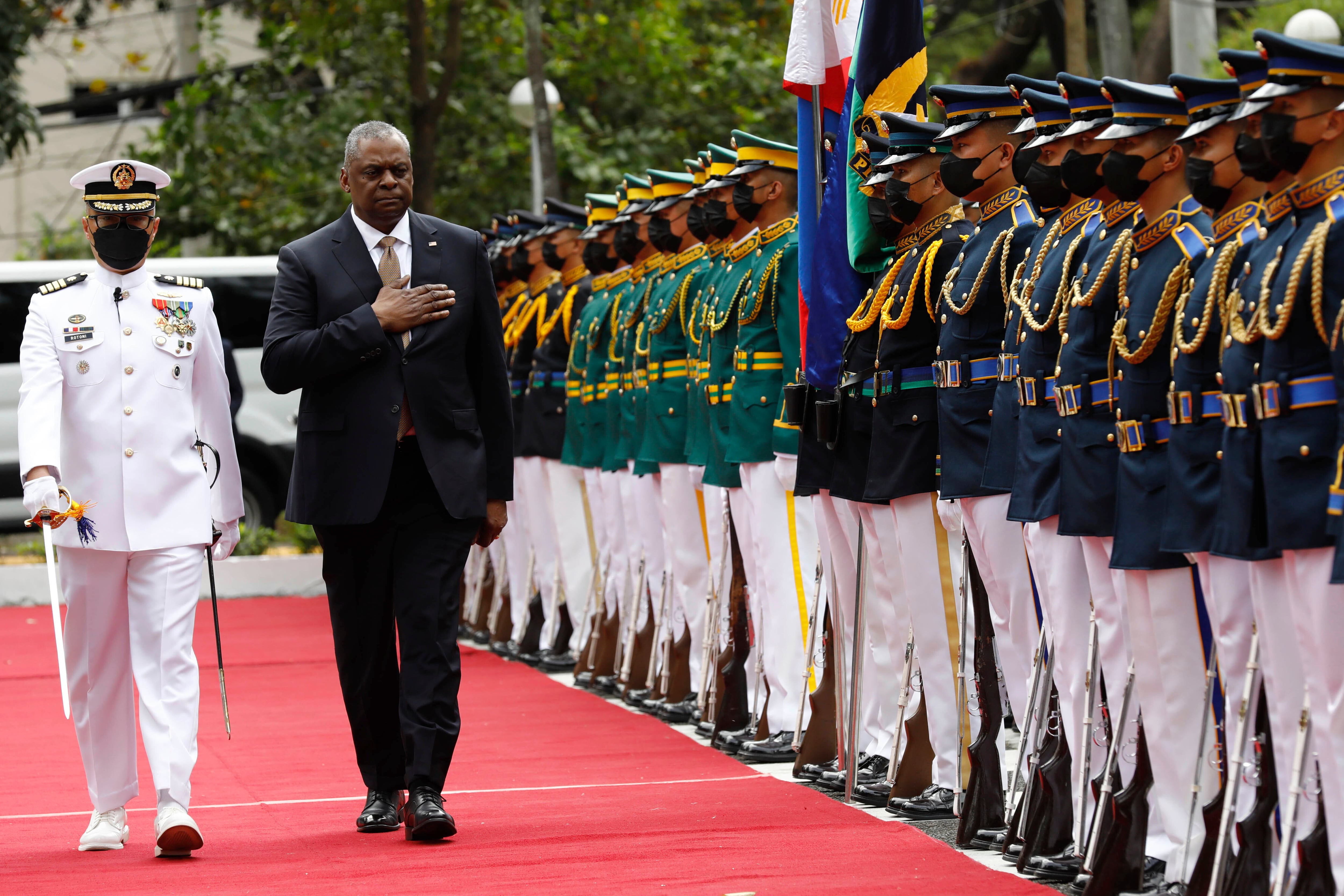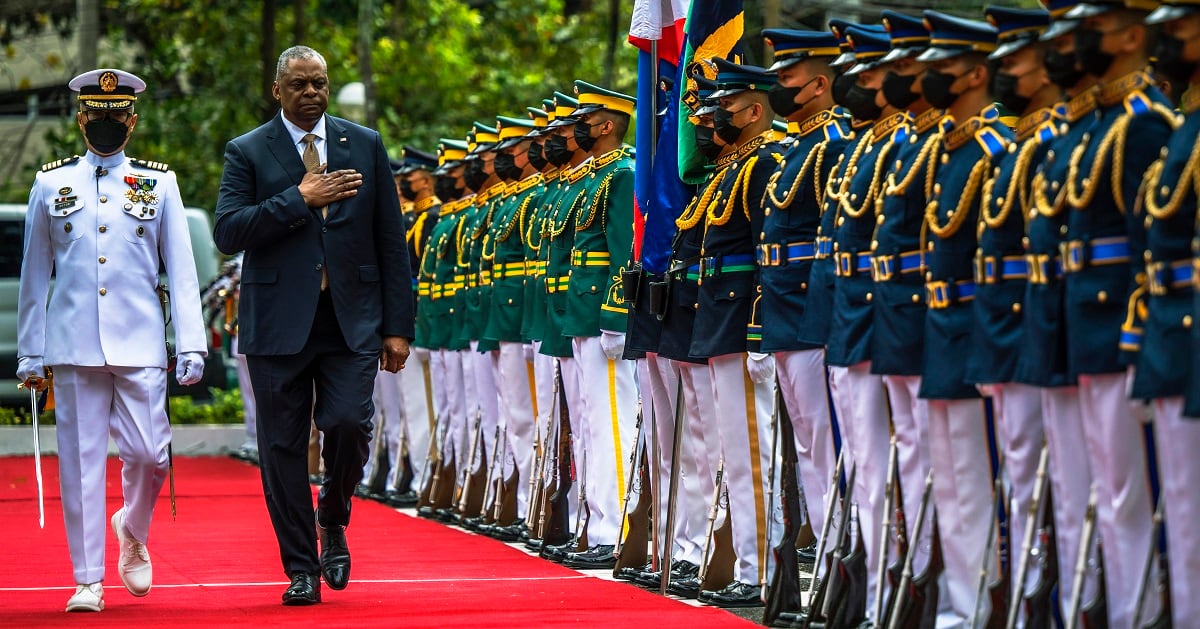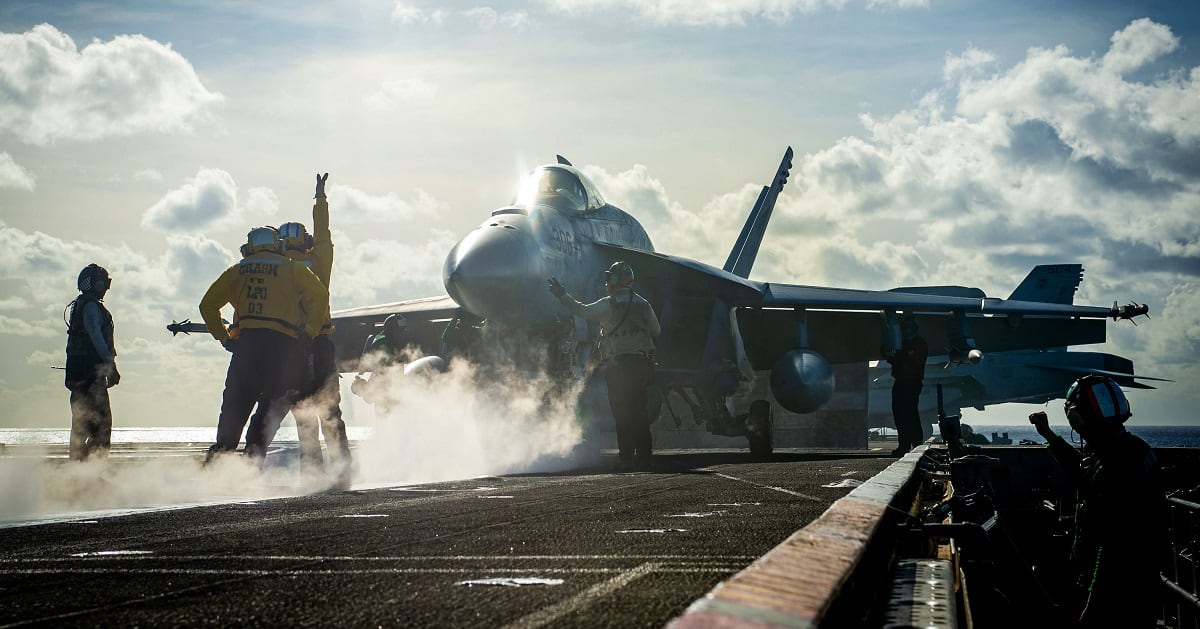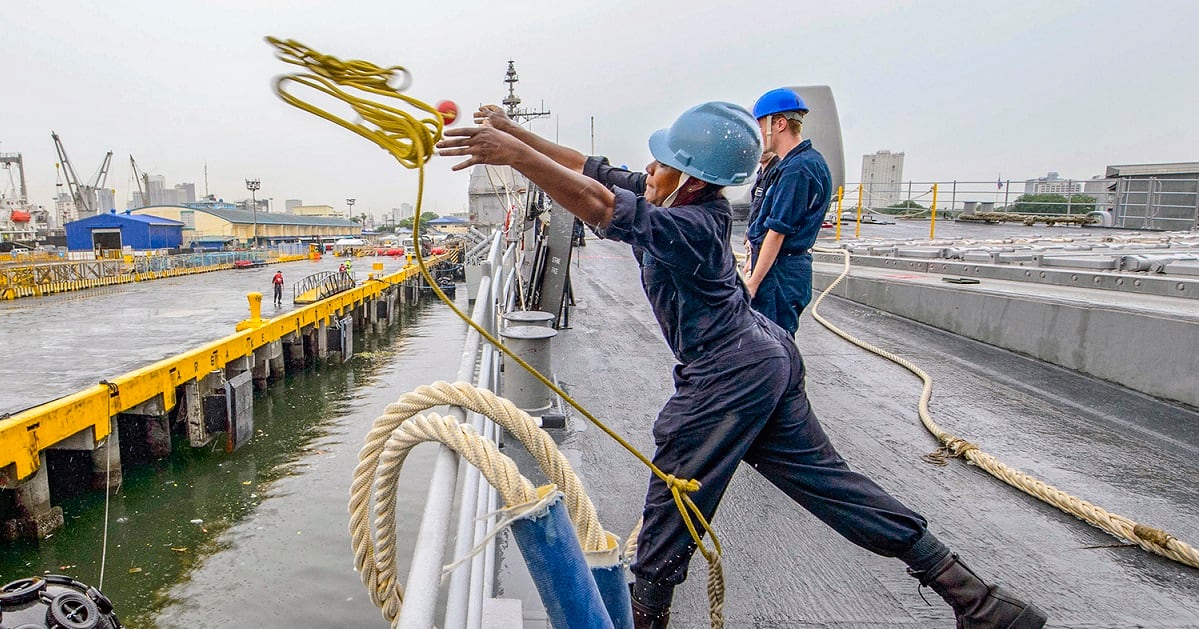It’s been more than 30 years since the U.S. Navy said goodbye to Naval Station Subic Bay and other bases in the Philippines, ending what had been nearly a century of U.S. military presence in the Asian nation.
The amphibious assault ship Belleau Wood became the last Navy vessel to leave Subic Bay in 1992, following a series of failed negotiations between the two countries that resulted in the Philippine senate voting against hosting any more U.S. bases.
A Washington Post report from the time of the U.S. departure suggests the fracture between the two longtime allies was partly due to a post-Cold War scaling back of America’s worldwide presence, among other concerns.
That dispatch notes how the top Navy commander at the time, Rear Adm. Robert Mercer, led a mile-long procession through the neighboring city of Olongapo on the day of the farewell ceremony.
“Bar girls and bystanders wept, elderly men saluted, and people reached out to shake Navy officers’ hands or ask for their autographs as the parade heralded the end of a nearly century-old ear,” the Post reported on Nov. 24, 1992.
RELATED

“I know this is not goodbye, but just farewell for now,” Mercer said in his goodbye speech. “We hope to come back … as soon as we can.”
Flash forward 32 years, and the Navy appears poised to make a return of some sorts to the Philippines under an agreement announced Feb. 2 by the two nations that will grant U.S. forces access to nine bases across the country, an increase from the five Philippine installations from which U.S. forces can currently operate.
Much has changed in the region since the 1992 departure: namely, China has ascended and sought to assert its primacy in the South China Sea, while building up its military and ratcheting up the rhetoric about a forced reunification with Taiwan.
The Feb. 2 announcement comes as the United States continues to marshal other nations to its side in what it frames as an existential battle for the current world order against China, and as the new Philippine president appears to be increasingly concerned with Chinese meddling in the region.

Philippine President Ferdinand Marcos Jr.’s willingness to allow more U.S. military on its soil suggests that Manila “is backing off on the balancing it attempted to do over the last decade between the U.S. and China,” said Bryan Clark, a retired submariner and senior fellow at the Hudson Institute.
“It appears that the Philippines is more firmly an ally of the U.S. again,” he said.
How the new agreement between the two countries will play out remains unclear. It could mean more Navy port calls in Subic Bay and elsewhere on the northern island of Luzon, which abuts the South China Sea.
It could mean more cross-navy training or stashing of materiel should a shooting war with Beijing kick off.
But it likely won’t involve the numbers of sailors and ships that once defined the Navy’s presence in the archipelago nation, or even the permanent basing of troops there, Defense Secretary Lloyd Austin said when announcing the new agreement.
While the number of U.S. troops remains unclear, Austin signaled that the new agreement is “a really big deal.”
Standing next to his Philippine counterpart, Carlito Galvez, officer in charge of the department of national defense, while announcing the expanded pact, Austin stressed how an added U.S. presence on the island nation would allow the longtime treaty allies to work and train together for things like natural disaster responses, while helping both nations counter China.
“We shall continue to work towards maintaining a stable, rule-based, open and inclusive Indo-Pacific region,” Galvez said, according to a Pentagon transcript of the press conference. “Along with partner countries, we strongly oppose any unilateral action or attempt to disrupt current world order and share the same views, that all countries should resolve any issue peacefully and adhere to the international law.”
Although it remains unclear how many U.S. sailors will eventually rotate through the Philippines under this new agreement, the Navy is the tip of the spear when it comes to stifling China’s assertions in the region, including its claim that the South China Sea is territorial, not international waters.

So, any new ally and capabilities can likely be seen as benefiting the sea service’s mission in the region, while buttressing the ranks of countries siding against Beijing.
While Austin ruled out permanent U.S. bases in the Philippines, Clark suspects the new arrangement will be akin to what the United States currently enjoys with Singapore and Australia: a modest, permanent U.S. command element and a regular troop rotation.
An increased U.S. military presence in the Philippines offers “more options for U.S. forces to respond to Chinese aggression, especially in situations short of major war,” Clark noted.
“Moreover, it helps reassure the Philippines that the U.S. alliance is firm,” he said. “In the end, dissuading China may come down to whether the U.S. can show nations in the region that the U.S. is the security partner of choice.”
A bevy of options
The two countries are also moving “expeditiously” to build up the sites from which U.S. forces operate, according to the Defense Department.
Already, the United States has invested $82 million to improve infrastructure on the five bases already in use.
The expansion and current U.S. access falls under the Enhanced Defense Cooperation Agreement, or EDCA, that was inked by both nations in 2014.
The two countries have already increased the speed of construction plans at the five existing sites, Gregory Poling, director of the Center for Strategic and International Studies’ Southeast Asian Program and Asia Maritime Transparency Initiative, wrote on the think tank’s website the day the deal was announced.
Of those five current locations, three are ideally located to contain China and protect the economic interests of the Philippines in the South China Sea, Poling wrote.
Basa Air Base and Fort Magsaysay sit on Luzon, the archipelago’s largest northernmost island that abuts the South China Sea to the north and west, he wrote.
Basa is critical to air patrols around Scarborough Shoal, a structure-less rock in the South China Sea that has hosted Chinese coast guard forces for the past decade.
Antonio Bautista Air Base is located on Palawan, an island within a few hundred miles of the disputed Spratly Islands, where China has built military outposts, Poling noted.
Those first five sites were mostly focused on air force and army capabilities. It remains unclear whether any of the new sites would involve the massive ship repair and supply efforts that Navy’s base at Subic Bay once offered.

Poling suspects that some of the new sites will be focused on naval needs.
“The new locations should include navy, and perhaps marine corps, bases as well,” he wrote. “At least one more location in Palawan, such as the Oyster Bay naval base, seems likely given the allied focus on the South China Sea.”
Another site or two might be located on the southern island of Mindanao, where U.S. forces have helped their hosts fight the Abu Sayyaf terrorist group since after 9/11.
But any new sites on Luzon, the large northern island that hosts the capital Manila “will be the most telling,” according to Poling.
“The new Philippine Navy facility at the former Hanjin Shipyard in Subic Bay is one possibility,” he notes. “Another is a facility in northern Luzon, such as coastal Cagayan Province, which could aid in surveillance, prepositioning of equipment and rear area support in Taiwan contingencies.
“Any facility up on the coast of Cagayan province, 200 miles from Taiwan and 1,000 miles from the Spratlys, it’s pretty obvious that site will be for other operations outside the South China Sea,” Poling told Navy Times.
Links in the island chain
While no date has been announced for when the countries will lay out the four new sites, Poling suspects it could happen when Austin and Galvez meet again this spring.
Crucially, the new agreement also helps solidify the “first island chain,” a string of U.S.-allied countries and territories stretching from Japan down to Taiwan and further south and west that would be crucial for closing off the East and South China seas should conflict break out with Beijing.
“It’s hard to get it done without forces in the Philippine Islands,” said James Holmes, a retired Navy officer and chair of maritime strategy at the Naval War College. “There’s a huge gap in the chain.”
To Holmes, current bases available to America are too geographically distant for countering Chinese aggression in the South China Sea and deterring Beijing from attacking Taiwan.
“You can’t do it with any hope of success from Okinawa, Sasebo or Yokosuka, let alone Guam,” he said of current U.S. bases in the region. “You have to be there to compete, and to be there you need nearby bases for supplies, fuel and R&R.”
Geoff is the managing editor of Military Times, but he still loves writing stories. He covered Iraq and Afghanistan extensively and was a reporter at the Chicago Tribune. He welcomes any and all kinds of tips at geoffz@militarytimes.com.





